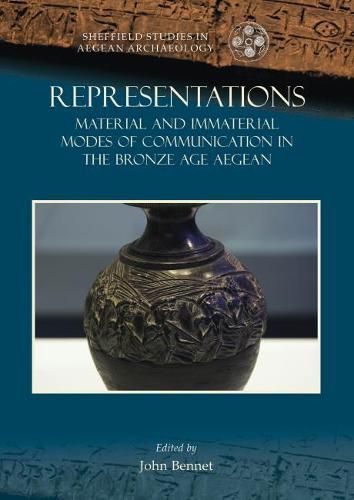Readings Newsletter
Become a Readings Member to make your shopping experience even easier.
Sign in or sign up for free!
You’re not far away from qualifying for FREE standard shipping within Australia
You’ve qualified for FREE standard shipping within Australia
The cart is loading…






This volume presents a series of reflections on modes of communication in the Bronze Age Aegean, drawing on papers presented at two round table workshops of the Sheffield Centre for Aegean Archaeology on ‘Technologies of Representation’ and ‘Writing and Non-Writing in the Bronze Age Aegean’. Each was designed to capture current developments in these interrelated research areas and also to help elide boundaries between ‘science-based’ and ‘humanities-based’ approaches, and between those focused on written communication (especially its content) and those interested in broader modes of communication. Contributions are arranged thematically in three groups: the first concerns primarily non-written communication, the third mainly written communication, while the second blurs this somewhat arbitrary distinction. Topics in the first group include how ritual architecture is represented in the Knossos wall-paintings; a re-interpretation of the ‘Harvester Vase’ from Ayia Triada; the use of colour in wall-paintings at Late Bronze Age Pylos; the use of painted media to represent depictions in other (lost) media such as cloth; and re-readings of Aegean representations of warfare and of the sequence of grave stelae at Mycenae. In the second group Linear B texts and archaeological data are used to explore further the colour palette used at Pylos, how people were represented diacritically through taste and smell, and how different qualities of time were expressed both textually and materially; the roles of images in Aegean scripts, complemented by a Peircian analysis of early Cretan writing; and a consideration of the complementary role of (non-literate) sealing and (literate) writing practices. Topics in the third group range from defining Aegean writing itself, through the contexts for literacy and how the Linear B script represented language, to a historical exploration of early attempts at deciphering Linear B.
$9.00 standard shipping within Australia
FREE standard shipping within Australia for orders over $100.00
Express & International shipping calculated at checkout
This volume presents a series of reflections on modes of communication in the Bronze Age Aegean, drawing on papers presented at two round table workshops of the Sheffield Centre for Aegean Archaeology on ‘Technologies of Representation’ and ‘Writing and Non-Writing in the Bronze Age Aegean’. Each was designed to capture current developments in these interrelated research areas and also to help elide boundaries between ‘science-based’ and ‘humanities-based’ approaches, and between those focused on written communication (especially its content) and those interested in broader modes of communication. Contributions are arranged thematically in three groups: the first concerns primarily non-written communication, the third mainly written communication, while the second blurs this somewhat arbitrary distinction. Topics in the first group include how ritual architecture is represented in the Knossos wall-paintings; a re-interpretation of the ‘Harvester Vase’ from Ayia Triada; the use of colour in wall-paintings at Late Bronze Age Pylos; the use of painted media to represent depictions in other (lost) media such as cloth; and re-readings of Aegean representations of warfare and of the sequence of grave stelae at Mycenae. In the second group Linear B texts and archaeological data are used to explore further the colour palette used at Pylos, how people were represented diacritically through taste and smell, and how different qualities of time were expressed both textually and materially; the roles of images in Aegean scripts, complemented by a Peircian analysis of early Cretan writing; and a consideration of the complementary role of (non-literate) sealing and (literate) writing practices. Topics in the third group range from defining Aegean writing itself, through the contexts for literacy and how the Linear B script represented language, to a historical exploration of early attempts at deciphering Linear B.